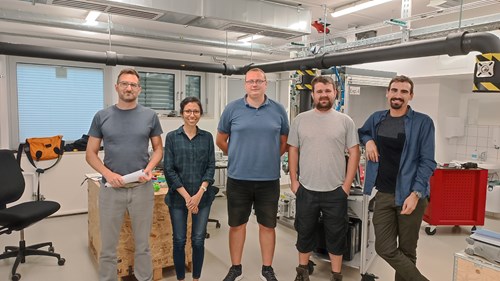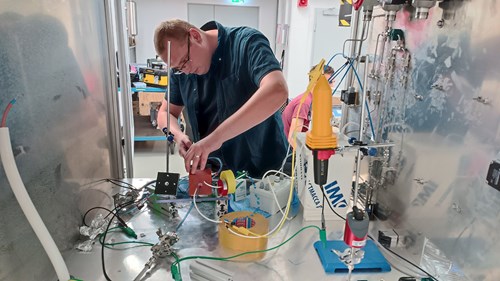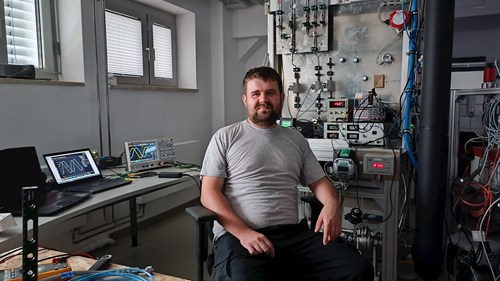Following the previous work with ceramic dielectric barriers, Dr. Jakub Kelar and Dr. Michal Pazderka from the Asocc. Prof. Kováčik's research group, Plasma Nanotechnologies and Bioapplications of the Department of Plasma Physics and Technology and CEPLANT Centre visited their colleagues at the Max-Planck-Institute for Plasma Physics near Munich, Germany.
They collaborated with Dr. Ante Hecimovic, Dr. Madhuwanthi Buddhadasa and Dr. Rodrigo Antunes from the Plasma for Gas Conversion (P4G) research group of the ITER Technology & Diagnostics section. The P4G group has a long-standing interest in barrier discharge gas conversion. Our scientists are systematically working on DBD discharges and understand different ceramic materials well. Thanks to a large strategic project, German colleagues mainly work on CO2 conversion in various plasma reactors. The research group of Assoc. Kováčik is approaching the CO2 conversion research with new innovations in discharge parameters and dielectric barrier materials.
Several years ago, the research group of Assoc. Prof. Kováčik collaborated with BUT on the GAČR project GA18-05478S under the leadership of Prof. Černák and Prof. Trunec. Now, scientists Dr. Kelar, Dr. Pazderka, Dr. Kelar Tučeková, and students Roman Přibyl and Lucia Švandová are continuing the search for further applications of the discharge (coplanar DBD with a unique dielectric barrier). They can change its basic properties by using different dopants in Al2O3 ceramics. With German colleagues, for example, they want to try CO2 conversion using plasma. CO2 conversion is the decomposition of carbon dioxide into carbon monoxide and oxygen. It is not only an environmental solution but also a comprehensive solution to problem fuels.
Dr. Kelar adds, "The experiments in Germany are groundbreaking for us because we can measure CO2 conversions at atmospheric pressure with our German colleagues. We are not equipped to do these measurements in our DPPT laboratories." The pilot experiments at the Max-Planck Institute in Germany may lead to interesting technical innovations on which the two groups could collaborate in the future.







